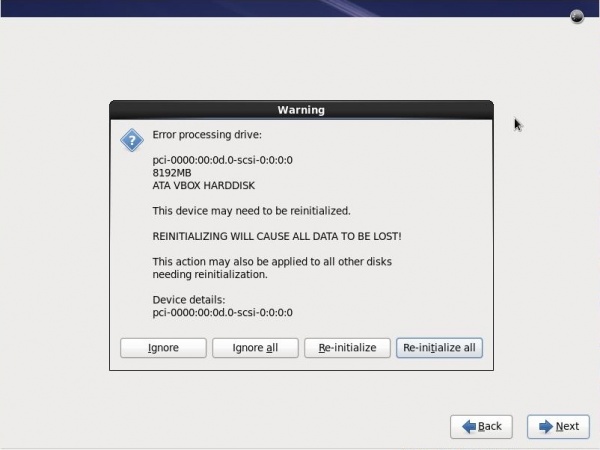Starting a new project for a new client, coming up to speed on a bit of kit almost like something I poked around with a ways back, and a ferociously Singaporean flu do not make for a productive week. I'm almost back to where I expected to be by noon on Monday. Since it's noon on Thursday…
What I'm trying to learn and leverage is Chef, an automated-configuration tool for computer systems (mostly servers). If you want to be able to reliably, repeatably set up a server (or a server farm), Chef or one of several available alternatives, will make your life much easier. Once you get your tool of choice working, that is.
Step One is, as various Chef amateur tutorials suggest, to start out with a plain-vanilla installation of your OS (Linux, in this case) of choice. Rather obviously, getting from bare metal (or bare VM disk platters, if you'd rather) to the basic working system should be push-button automatic as well. "Fine," you say, "nearly every major distro has its own automation system; surely I should be able to just pick up, say, a Red Hat Enterprise Linux clone like CentOS or Scientific Linux and use a Kickstart file, and it should Just Work. Right?"
Close; but then, "close" only counts for scoring purposes in horseshoes and (arguably) the use of hand grenades. This is neither, though it does have the ability to blow up in our faces with unpleasant consequences.
Putting together a basic Kickstart file to set up a base system (on which we can use Chef to complete installation and configuration; the whole point, remember) is itself pretty straightforward. Except for one "little" thing:

(not my actual screenshot; this one courtesy of Máirín Duffy.)
Some bit of Google-fu later and asking questions on the #centos channel of irc.freenode.net (thanks, Wolfie!) pointed me to the correct option to set when clearing the disk partitions, and all should have been peachy-keen and wonderful from that point on. Except it wasn't, of course.
Tests conducted with two different versions each of three RHEL clones on my VMWare Fusion 3.1.3 system all failed with a mysterious "cannot read repodata" fatal error being thrown by the installer.
Except, of course, that mounting the DVDs in question and browsing them showed the /repodata directory and contents exactly as they should be. Fast-forward through a day of flailing and fuzzing different options "just to see what happens", and you have a classic yak shave.
So, knowing that I'll have to get the RHEL versions working eventually, and having been previously warned against using Chef-on-Ubuntu as a learning exercise, I'm now spinning up AutoYAST on openSUSE, which is (experientially) what I should have started with from the beginning.
The wall, where my head has banged against it repeatedly, can be repaired. The calendar? Time is the ultimate non-renewable resource.
(Anybody who has any suggestions for Making This Work with RHEL clones, ideally Scientific 6.1 and/or CentOS 6: enlightenment would be Greatly Appreciated.)